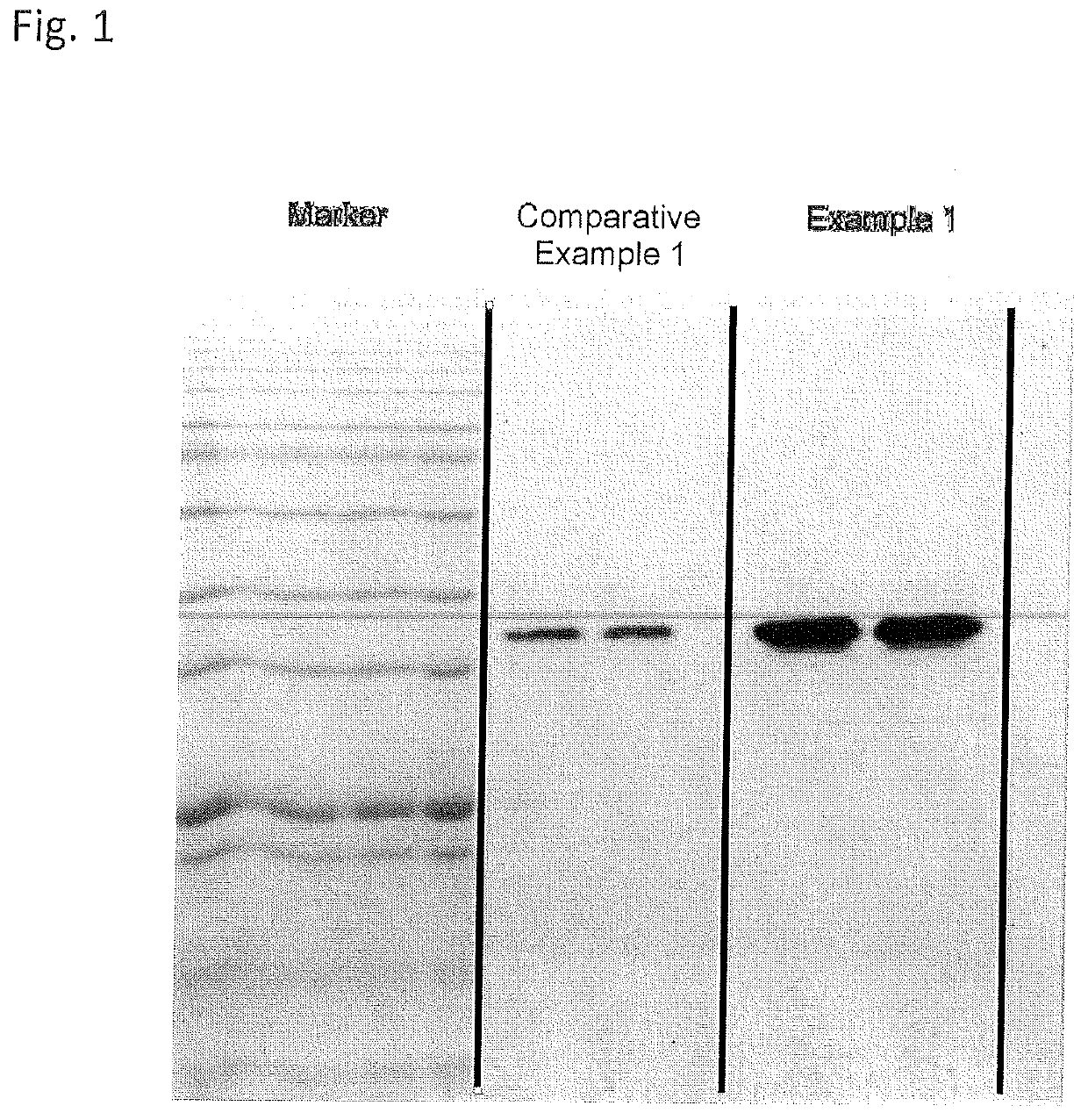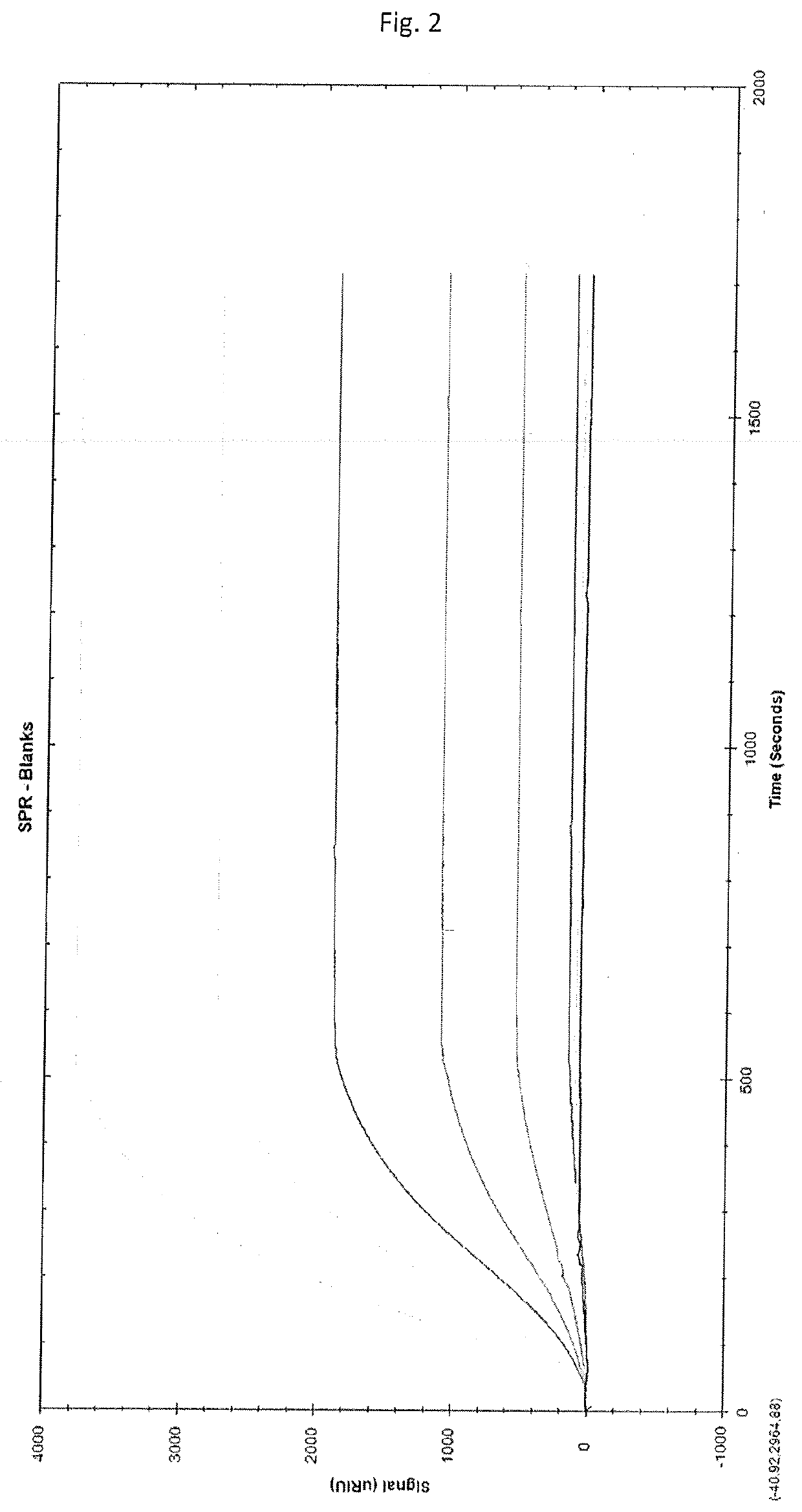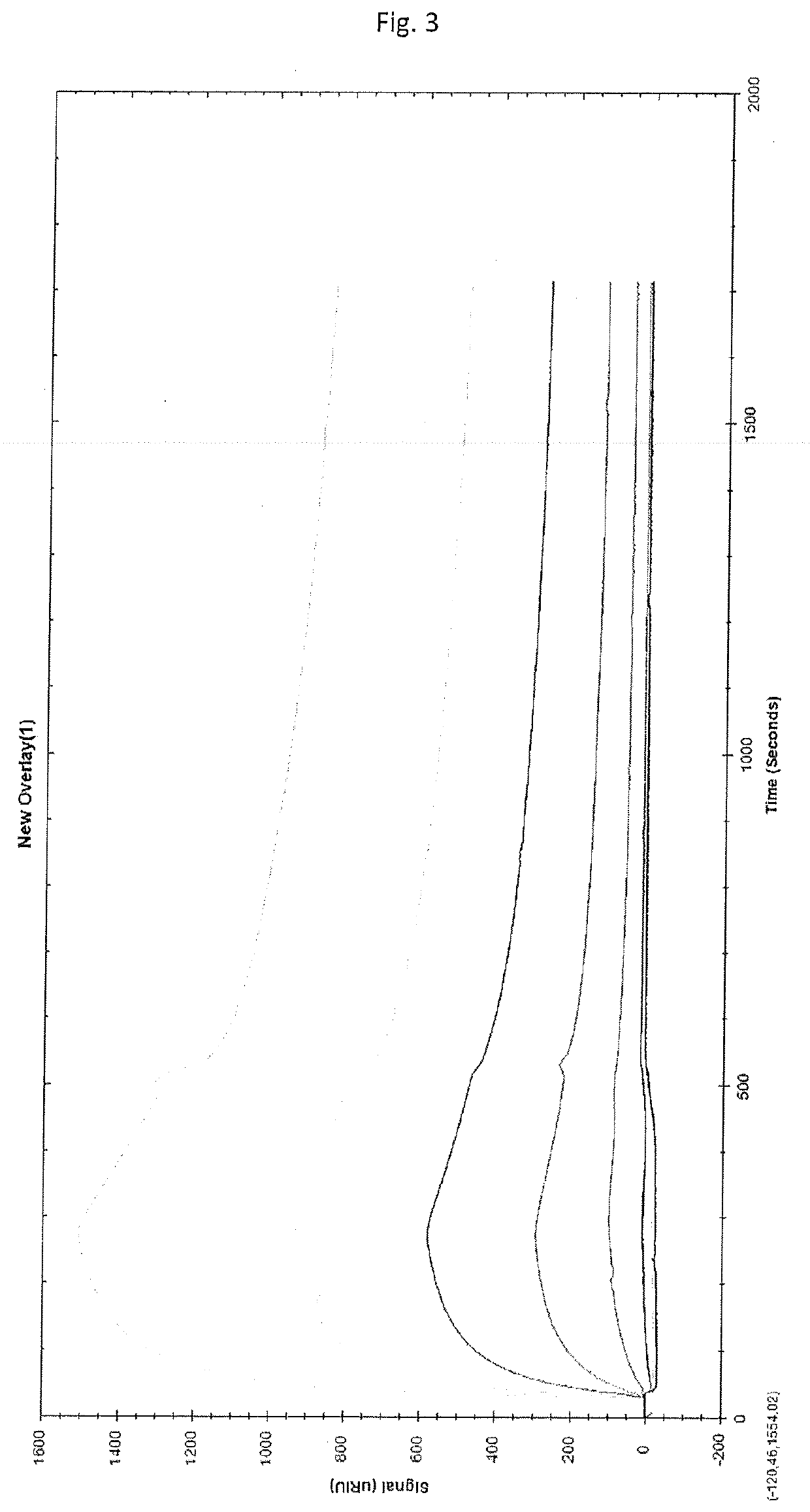Solid-phase chelator material, method for producing thereof and use thereof for the purification of proteins
a chelator material and solid phase technology, applied in the direction of peptide preparation methods, solid sorbent liquid separation, ion-exchangers, etc., can solve the problem of reducing the binding capacity of proteins
- Summary
- Abstract
- Description
- Claims
- Application Information
AI Technical Summary
Benefits of technology
Problems solved by technology
Method used
Image
Examples
example 1
of a New Chelator by Preparation of Diethylene Triamine Agarose, Reaction of EDTA with Ethylene Diamine, and Covalent Coupling of EDTA-EDA-EDTA onto Agarose
Synthesis of Diethylene Triamine Agarose
[0244]10 ml agarose particles (WorkBeads 40 SEC, BioWorks Sweden AB, Uppsala) are resuspended in 10 ml 1M caustic soda solution and incubated on a thermoshaker for two hours. Then 5 ml epichlorohydrine are added and the suspension is heated at 30° C. for four hours. The suspension is filtered via suction filtration and washed six times with dd water. Then the agarose is resuspended in 20 ml of a 5% diethylene triamine solution, pH 10.5, and incubated for twenty hours at 65° C. The agarose is suction-dried, washed four times with dd water, four times with phosphate-buffered saline and stored in anhydrous dimethylformamide.
Synthesis of EDTA-EDA-EDTA
[0245]853 mg EDTA dianhydride (3.33 mmol) are dissolved in 15 ml dimethylformamide and a solution of 100 mg ethylene diamine (1.67 mmol) in 5 ml d...
example 2
of a New Chelator by Preparation of Pentaethylene Hexamine Agarose, Reaction of EDTA with Ethylene Diamine, and Covalent Coupling of EDTA-EDA-EDTA onto Agarose
Synthesis of Pentaethylene Hexamine Agarose
[0247]10 ml agarose particles (WorkBeads 40 SEC, BioWorks Sweden AB, Uppsala) are resuspended in 10 ml 1M caustic soda solution and incubated on a thermoshaker for two hours. Then 5 ml epichlorohydrine are added and the suspension is heated at 30° C. for four hours. The suspension is filtered via suction filtration and washed six times with dd water. Then the agarose is resuspended in 20 ml of a 5%-pentaethylene hexamine solution, pH 10.5, and incubated for twenty hours at 65° C. The agarose is suction-dried, washed four times with dd water, four times with phosphate-buffered saline and stored in anhydrous dimethylformamide.
Synthesis of EDTA-EDA-EDTA
[0248]853 mg EDTA dianhydride (3.33 mmol) are dissolved in 15 ml dimethylformamide and a solution of 100 mg ethylene diamine (1.67 mmol) ...
example 3
of Dimeric EDTA Chains by Sequential Coupling of EDTA, Ethylene Diamine and EDTA
Synthesis of Diethylene Triamine Agarose
[0250]10 ml agarose particles (WorkBeads 40 SEC, BioWorks Sweden AB, Uppsala) are resuspended in 10 ml 1M caustic soda solution and incubated on a thermoshaker for two hours. Then 5 ml epichlorohydrine are added and the suspension is heated at 30° C. for four hours. The suspension is filtered via suction filtration and washed six times with dd water. Then the agarose is resuspended in 20 ml of a 5% Ndiethylene triamine solution, pH 10.5, and incubated for twenty hours at 65° C. The agarose is suction-dried, washed four times with dd water, four times with phosphate-buffered saline and stored in anhydrous dimethylformamide.
Synthesis of EDTA-Agarose (NH2)
[0251]10 ml amino agarose are resuspended in 10 ml dimethylformamide, and a solution of 1500 mg 4,4′-Ethylenebis(2,6-morpholinedione) in 10 ml dimethylformamide are added. The reaction mixture is incubated for six ho...
PUM
| Property | Measurement | Unit |
|---|---|---|
| magnetic | aaaaa | aaaaa |
| length | aaaaa | aaaaa |
| concentration | aaaaa | aaaaa |
Abstract
Description
Claims
Application Information
 Login to View More
Login to View More - R&D
- Intellectual Property
- Life Sciences
- Materials
- Tech Scout
- Unparalleled Data Quality
- Higher Quality Content
- 60% Fewer Hallucinations
Browse by: Latest US Patents, China's latest patents, Technical Efficacy Thesaurus, Application Domain, Technology Topic, Popular Technical Reports.
© 2025 PatSnap. All rights reserved.Legal|Privacy policy|Modern Slavery Act Transparency Statement|Sitemap|About US| Contact US: help@patsnap.com



